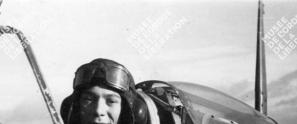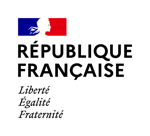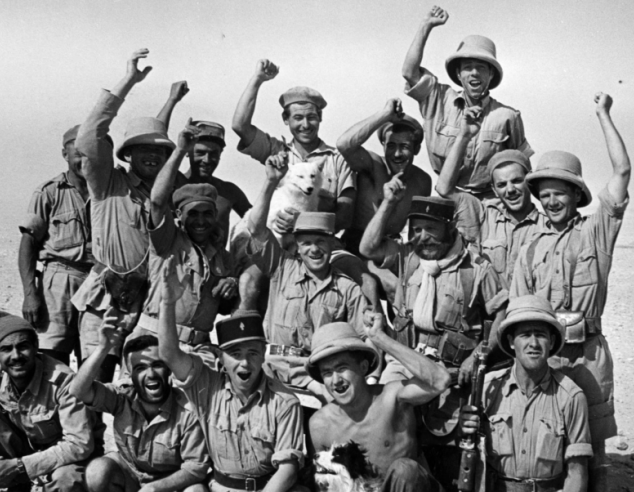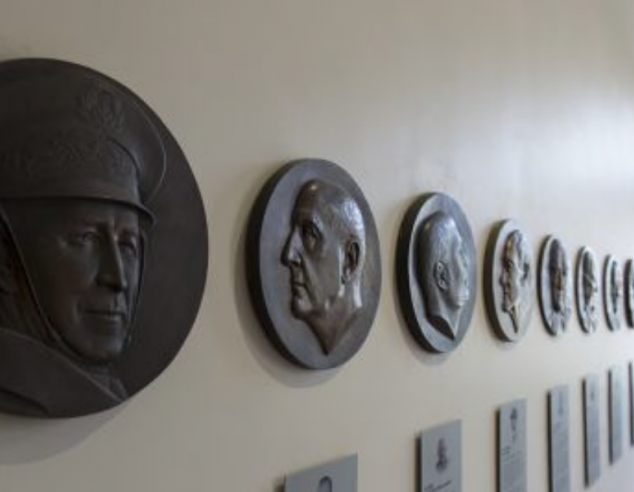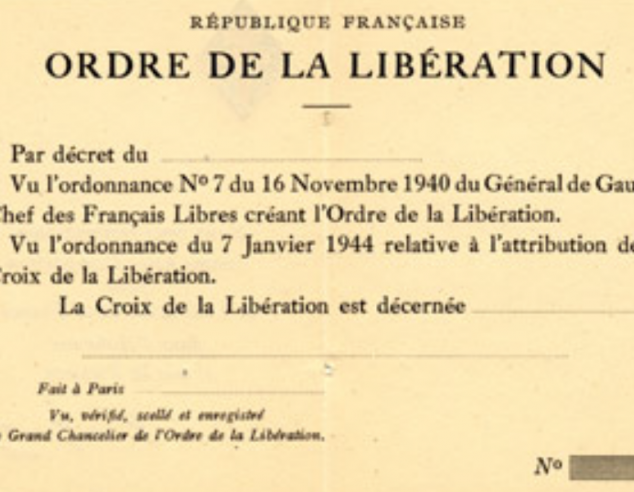The French Army
Army units began to form following the appeal of 18 June 1940. These were mainly simple battalions or even simple companies, which, as the territories rallied and new volunteers came in, were gradually transformed into regiments. These regiments mainly fought within the two major “historical” Free French units, namely the First Free French Division (1ère DFL) and the Second Armoured Division (2e DB). For their continuous, active participation in operations from 1940 to 1945, nine of these units were honoured with the Cross of Liberation.
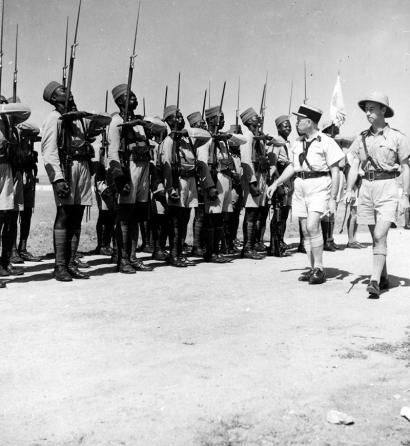
On August 29, 1940, Oubangui-Shari (previously part of French Equatorial Africa and now part of the Central African Republic) rallied to Free France on the initiative of its governor, Pierre de Saint-Mart. A few weeks later on November 1, 1940, the French Equatorial African march battalion, 2e Bataillon de marche de l'Afrique équatoriale française, also known as Bataillon de marche de l'Oubangui-Chari, was formed in Bangui using contingents rallied from the following battalions: Bataillon de tirailleurs de l'Oubangui (BTO) and Bataillon de tirailleurs sénégalais de l'Oubangui-Chari (BTSOC).
Placed under the command of Commander de Roux, 25 officers, 115 non-commissioned officers and over 800 enlisted African troops completed the formation. The battalion, commonly known as BM 2, was made up of three voltigeur (light infantry) companies commanded by Captain Amiel, Lieutenant Hautefeuille and Lieutenant Féraud respectively, a heavy company commanded by Captain de Bricourt, and a Groupe Franc French Resistance group commanded by Lieutenant Pierre-Louis Bourgoin.
In early January 1941, BM 2 received its pennant and left Bangui for Brazzaville, Congo, where it received new recruits. It then headed once again toward Durban in February before reaching Suez in April, then Qastina, Palestine, where the majority of Free French ground units were gathered. On May 26, 1941, the Battalion was inspected by General de Gaulle.
Attached to BM 1 and to General Cazaud’s 1ère Demi-Brigade de Légion Étrangère, BM 2 received a baptism of fire during the Syrian Campaign. It was deployed to the Capture of Damascus on June 21, 1941, and to fighting in An-Nabek on June 30. After taking on volunteers from the Levant in early August, the battalion began its advance toward Aleppo. On the orders of Commandant Amiel, BM 2’s 5e compagnie fought a hard battle against Bedouin rebels in Mayadine, on the outskirts of Euphrates, on September 29, 1941. In October, at the head of BM 2 Commandant Amiel replaced Lieutenant-Colonel de Roux, appointed Commander of Territories in Northern Syria.
In late November, BM 2 left Aleppo and headed to Tartus to take part in operations organized by General Koenig, commander of the 1st Free French Brigade, 1ère Brigade française libre (1ère BFL), before heading with it to Egypt, then Libya. On January 15, 1942, BM 2 took up position in front of Halfaya where 5,000 Italian and German troops were entrenched. Two days later, the position was taken. In February 1942, the battalion headed toward Bir-Hakeim in the Libyan desert with 1ère BFL, where it occupied the northern disposition, and spent three months equipping the position.
It took part in reconnaissance missions and harried the enemy (with Jock columns) until May 27, when the Italians and Germans launched their offensive on the position. The unit stood firm and left the position as rearguard during the night of June 10-11, 1942. During the two-week siege and departure from Bir-Hakeim, over 200 men were killed or declared missing in action, and many were wounded. The battalion was transferred to Lebanon in July 1942 and received the Cross of Liberation in Beirut on August 29, 1942, pinned onto its pennant by General de Gaulle; the day after the accidental death of its former leader, Lieutenant-Colonel de Roux.
BM 2 left Lebanon on January 3, 1943 after being tasked with a sovereignty mission in Madagascar. Its presence was intended to establish High-Commissioner Legentilhomme’s authority, ensure order, and to counter South Africa’s plans to remain there. The battalion arrived in Tamatave in February 1943. It was relieved of its duties by BM 10 and left Madagascar for Bangui, arriving there in October 1943. The tirailleurs (French colonial troops) were given one month’s leave before resuming training. In March 1944, the battalion, still under the command of Commander Amiel, set sail for Morocco before spending time in Algeria.
Despite its desire to take part in fighting, it only reached Marseille, France in January 1945 after an arduous wait. Immediately assigned to the Atlantic Front commanded by General de Larminat, it took up position at the outposts of Royan and initially carried out numerous patrols in February and March. Composed of 5 companies, including a headquarters support company and a heavy company, BM 2 distinguished itself on April 15-16 by removing a series of enemy positions littered with blockhouses and by taking the village of Didonne. During the fight to liberate Royan, 23 of its men were killed and 84 were injured. The battalion was transported to the front at La Rochelle on April 30 and took part in the final clean-up operations before the Germans surrendered.
On June 18, 1945, a detachment from BM 2 had the honor of marching under the Arc de Triomphe in Paris. Reservists swiftly left the battalion, followed by the Africans who were repatriated as of September 1945, while officers were posted to various assignments. Bataillon de marche n° 2 was officially disbanded on November 1, 1945. It lost 473 men during the fighting: 167 men were killed and 306 were wounded. It had 20 Companions of the Liberation in its ranks.
- Companion of the Liberation - Decree of September 9, 1942
- Croix de Guerre 1939-1945 (2 palms)
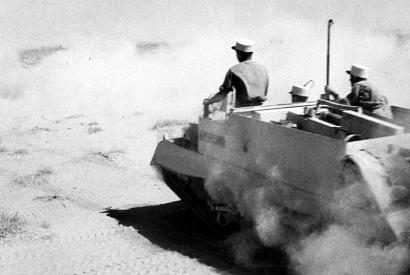
13e Demi-brigade de légion étrangère (13e DBLE) was created in February 1940 in Sidi Bel Abbès, Algeria. It was composed of volunteers from 1er Régiment étranger d'infanterie (1er REI) and from regiments stationed in Morocco. It was required to form part of the Expeditionary Corps initially intended to support the Finnish against the Russians, but ended up taking part in operations in Norway against the Germans with the French Expeditionary Corps, commanded by General Béthouart.
It arrived in Bjerkvik on May 13 before conquering Narvik from May 28 to June 2, 1940. The German invasion of France caused it to be repatriated to Brest in mid-June, before being swiftly withdrawn to Great Britain, where, on June 29, 1940, Colonel Magrin-Vernerey - known by his nom de guerre Raoul Monclar – and a thousand of his men rallied to General de Gaulle and Free France. The volunteers formed 14e Demi-brigade de marche de la Légion étrangère (14e DBMLE) and set off on the Dakar Expedition on August 31, 1940 which aimed to bring French West Africa back into the war.
After failure in Dakar in late September 1940, 14e DBMLE, commanded by Lieutenant-Colonel Cazaud, arrived in French Equatorial Africa and took part in the rallying of Gabon in November 1940. In early 1941, it reverted to its former name, 13e DBLE. As part of the Free French Orient Brigade, it bypassed Africa in order to take part in fighting against Italian forces that raged across Eritrea. After three arduous months spent traveling in extremely tough conditions due to heat, the légionnaires (French Foreign Legion soldiers) completed their task brilliantly, taking part in the Battle of Enghiahat and the Capture of Keren (March 27, 1941) and Massaoua (April 8, 1941), taking over 10,000 prisoners.
After arriving in Qastina, Palestine, where the majority of ground troops belonging to Free French Forces (FFL) were gathered, 13e DBLE fought against Vichy’s troops in the fratricidal Syrian Campaign and the Capture of Damascus on 21 June, 1941. In October 1941, the new commanding officer, Lieutenant-Colonel Amilakvari was presented with 13e DBLE’s first flag by General Catroux in Homs. Out of the three battalions that made up 13e DBLE, the first one, led by Commandant de Bollardière, was attached to General Cazaud’s 2e Brigade française libre, and the other two to Koenig’s 1ère Brigade.
In mid-February 1942, légionnaires of 2e and 3e battalions moved to Bir-Hakeim with the other units from 1ère Brigade, with the task of containing the unstoppable advance of Italian and German troops led by General Rommel posing a threat to the Eighth British Army, which had withdrawn to Alexandria. The légionnaires coordinated the defense and effectively took part in Jock columns in Bir-Hakeim.
Like all other French units, 13e DBLE suffered violent attacks by Axis troops between May 27 and June 10. The légionnaires successfully accomplished their mission under the orders of Lieutenant-Colonel Amilakvari, despite a lack of water and extremely harsh living conditions. This resistance enabled British command to reorganize itself. Following the forceful evacuation of the position on the night of June 10-11, 13e DBLE headed to the middle of the desert south of Cairo to tend to its wounds for three months.
Barely recovered from its injuries, on October 23, 1942, the legion, made up of just two battalions (with one command company and one antitank company) was deployed to ease the main attack on Allied forces in El Alamein, Egypt, as part of a diversion operation with 1ère Brigade. Once there, it took part in the difficult attack in the peaks of Himeimat and managed to immobilize two armored divisions, but lost its prestigious leader, Dimitri Amilakvari, who was fatally injured. Continuing its journey via Tobruk, the Demi-brigade, now under the command of Commander Bablon, reached Tunisia via Tripoli and Benghazi before being deployed to Takrouna in May 1943.
Sent to Tripolitania “as penance” with the entire Free French 1st Division (1ère DFL), 13e DBLE headed back to Tunisia in September 1943 before receiving reinforcements from North Africa and completing its training ahead of taking part in operations in Italy. In April 1944, it arrived in Italy with 1ère DFL under the orders of General Diego Brosset. It stood out throughout the campaign with its two battalions, its 105 mm gun company and its antitank company, especially in Pontecorvo, Monte Leucio, San Lorenzo, Acquapendente and Radicofani. However, the legion lost 3 officers and 103 non-commissioned officers and légionnaires, while 14 officers and 346 non-commissioned officers and légionnaires were injured.
On August 16, 1944, it arrived in Provence with General Lattre de Tassigny’s B Army and took part in the Capture of Toulon and the liberation of Hyères, Avignon, Lyon, Autun, Dijon, Besançon and Vosges. French soil was liberated slowly but relentlessly. Fighting was furious and deadly in Vosges, and often involved hand-to-hand combat. 13e DBLE played a decisive role there, clearing the Remiremont road to support 3e DIA. It also played an active role in fighting in Gérardmer, Ballon, Alsace and Masevaux.
In early 1945, the unit, now made up of three battalions thanks to Ukrainian reinforcements, took part in protecting Strasbourg and liberating Colmar in extreme weather conditions under the orders of Commander Arnault. In March 1945, Lieutenant-Colonel Saint-Hillier took command of 13 DBLE who, after receiving its flag in Paris on April 2, was decorated with the Cross of Liberation by General de Gaulle a week later in Nice. But the war was not quite over, and in April and May, 13 DBLE took part in intense fighting in Authion, Southern Alps, where the entrenched Germans fought fiercely. The légionnaires then went to Italy, which would later enable the border to be pushed further east.
Having left North Africa in 1940, the légionnaires of 13e Demi-brigade de Légion étrangère took part in all campaigns spanning Norway to the outskirts of Turin, Italy, covering 90,000 kilometers. In September 1946, 13e DBLE received the fourragère in the colors of the Military Medal and the Croix de Guerre 1939-1945. In addition, 13e DBLE had 96 individual Companions of the Liberation in its ranks. Today, 13e Demi-brigade de légion étrangère is stationed in Aveyron, on the Larzac plateau. As such, it is entitled to wear the fourragère in the colors of the Order of the Liberation.
- Companion of the Liberation - Decree of April 6, 1945
- Military Medal
- Croix de Guerre 1939-1945 (4 palms)
- French Resistance Medal with rosette
- Croix de Guerre 1939-1945 (Norway)
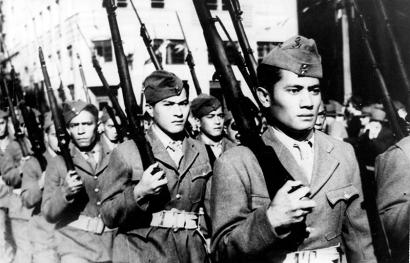
The Marine Infantry and Pacific Battalion, Bataillon d'infanterie de marine et du Pacifique (BIMP), was the result of the merging of two battalions destroyed during the Battle of Bir-Hakeim, Libya in June 1942: 1er Bataillon d'infanterie de marine (1er BIM) and Bataillon du Pacifique (BP 1).
1ER BATAILLON D'INFANTERIE DE MARINE 1940-1942
On July 12, 1940, the 3rd Battalion of the 24th Colonial Infantry Regiment, 3e Bataillon du 24e Régiment d'infanterie coloniale (24e RIC), stationed in Cyprus, refused the armistice. Led by Captain Lorotte de Banes, it gathered in Nicosia where it was enthusiastically welcomed by the British. Sent to Egypt, the 350 French volunteers were welcomed to Ismailia by 150 comrades from 24e RIC, commanded by Captain Folliot, who escaped from Lebanon on June 27 with his men from 3e Compagnie using false work orders.
Gathered at Camp Moascar, the French volunteers decided to take the name “1er Bataillon d'infanterie de marine” (1er BIM) and formed the first Free French contingent for the British. The battalion received its flag accompanied with the Union Jack in Moascar on August 25 in the presence of the British authorities and French representatives. BIM’s soldiers managed to obtain equipment (radio, weapons and kit) with difficulty from the British, enabling them to tackle the specific conditions posed by war in the desert.
Compagnie Folliot was the first to become operational and, on September 6, 1940, it left Ismailia and joined the British 7th Armored Division which faced 200,000 Italians, in Egypt’s Marsa Matrouh region. In early December, 2e Compagnie joined Compagnie Folliot at the start of the British offensive. As such, Folliot took command of both companies. On December 7, Allied and Free French forces from BIM crossed the Libyan border and seized Sollum and Sidi-Barrani, taking several thousand prisoners. Bardia fell on January 6, 1941 followed by Tobruk on January 21, resulting in the first loss of life among BIM’s ranks.
The British offensive continued in Libya in February 1941. In March, under the orders of Captain Jacques Savey, the 250-man 3e Compagnie was sent to join Colonel Raoul Monclar’s French Orient Brigade in Eritrea, where it took part in the Capture of Keren (March 27) and Massaoua (April 8).
In May 1941, the entirety of BIM met in Qastina, Palestine under the orders of Lieutenant-Colonel de Chevigné, where Free French Forces were gathered in preparation for the Syrian Campaign. On May 27, General de Gaulle inspected the troops and awarded the Cross of Liberation to several BIM soldiers. The battalion was on the front lines during the Syrian Campaign in June 1941, including during the Capture of Damascus. It was then incorporated into General Koenig’s 1ère Brigade française libre, and newly composed of two reconnaissance companies and an antitank company under the orders of Jacques Savey. In late September 1941, it joined the British Eighth Army in Libya. In mid-January it took part in the Capture of Halfaya, before occupying the position of Bir-Hakeim, southern Tobruk, with Koenig’s brigade. After three months spent organizing defenses in Bir-Hakeim and patrolling the desert, the Italian and German offensive led by Rommel started on May 27, 1942. After putting up fierce resistance that lasted two weeks, Koenig received orders to leave the position. BIM suffered heavy losses during fighting, including its leader, Commander Savey.
To find out more: List of Companions of the Liberation who were in 1er BIM
BATAILLON DU PACIFIQUE 1941-1942
In October 1940, Polynesia, New Caledonia, and New Hebrides rallied to Free France and set up a battalion. On April 21, 1941, the Monowaï set sail from Papeete and headed to Nouméa with 300 Tahitian volunteers on board. Together with volunteers from New Caledonia and New Hebrides they formed a Pacific battalion with 550 men, Bataillon du Pacifique (BP1), led by Commander Broche.
After 45 days of training near Sydney, Australia, and five months spent near Tel Aviv, Palestine, the “Pacific Islanders” were deployed to the African Campaign as part of General Koenig’s 1ère Brigade française libre. On December 28, 1941, the entirety of 1ère BFL set off for Libya.
FIRST VOLUNTEERS OF THE PACIFIC BATTALION
BP 1’s baptism of fire took place on January 15, 1942 in Halfaya, on the border of Egypt and Libya, where 6,300 Italians and Germans were entrenched. The action was cut short as the enemy capitulated and surrendered en masse.
On February 14, 1942, Koenig’s brigade relieved a British unit of its duties in Bir-Hakeim. It set up the position and organized Jock columns which harried the enemy and retrieved intelligence over three months. At dawn on May 27, 1942, the Italian Ariete division launched the first attack. BP 1 occupied the position’s southwest flank; on June 6, it received and fought off the first major attack. The battalion managed to hold its positions amid extreme conditions. However, on June 9, two days before the sortie, it lost its leader Lieutenant-Colonel Broche and his adjutant Captain de Bricourt.
On June 10, British command gave orders to evacuate the position. After once again fighting off attacks all day long, the French left the position by breaking through the enemy’s “ring of steel” and managed to join the British Eighth Army. 1ère Brigade held its position for two weeks; the delay imposed on Afrika Korps enabled General Montgomery’s English troops to reorganize in Alexandria.
To find out more: List of Companions of the Liberation who were in BP 1
BATAILLON D'INFANTERIE DE MARINE ET DU PACIFIQUE
The units that made up 1ère Brigade required grouping together after they were particularly hard hit during the Battle of Bir-Hakeim. As such, BP 1 and 1er BIM, both of which lost their commanders, merged to form a marine infantry battalion, Bataillon d'infanterie de marine et du Pacifique (BIMP).
The battalion, under the orders of Commander Bouillon, had just under 700 men. It was an integral part of the 1st Free French Division (DFL). After the Battle of El Alamein (Egypt) which stopped the advance of Axis forces, BIMP was the only French unit – with a flying column of tanks and armored cars from the Moroccan Spahis – posted to the British Eighth Army to take part in pursuing the enemy which began on November 5, 1942.
BIMP entered Tunisia hot on the heels of the English on February 23, 1943. Rommel launched a counterattack but it was unsuccessful. BIMP was the only unit in 1ère DFL that took part in operations in Tunisia with troops from General Leclerc’s L Force between March 14 and May 5. The general surrender of the Axis forces finally took place on May 13, 1943. The division took many prisoners: 1,200 officers and 23,000 men.
Following the Tunisian Campaign, BIMP received reinforcements in the form of volunteers from North Africa and escapees from France who traveled via Spain and Corsica. A period of reorganization and intensive training began. BIMP was incorporated into the 4th Brigade of General Brosset’s 1st Free French Division in October 1943.
On April 20, 1944, BIMP arrived in Italy with DFL. The general offensive was launched on the evening of May 11. During fighting in front of San Giorgio on May 16, the battalion lost its leader, Commander Magny, who died while leading 3e Compagnie. DFL went back on the offensive and achieved its objectives. Mount Girofano was surrounded and the Gustav line was broken. On June 4, Rome’s neighborhoods were reached. A company from BIMP entered the city and marched through alone. On June 30, 1944, 1ère DFL was inspected by General de Gaulle in Naples. BIMP was cited by the Army and received the Croix de Guerre on its pennant.
During the night of August 16-17, 1944, BIMP arrived in Provence and distinguished itself on August 20 in front of Hyères, when it took the Golf-Hôtel, which had been repurposed as a fortress by the Germans. It then took part in clean-up operations in the forts of eastern Toulon, climbing the Rhône Valley, and the Battle of Vosges.
BIMP IN 1943
Overseas troops, African tirailleurs and volunteers from the Pacific, could not withstand the cold. As such, high command proceeded by relieving some 6,300 men of their duties, of which 275 were Caledonian and Tahitian troops from BIMP. Survivors from the Bataillon du Pacifique de 1941 were replaced by young volunteers from mainland France and soldiers from the French Forces of the Interior (FFI). “Pacific Islanders” were sent to Paris where they awaited repatriation.
BIMP went on to fight fierce battles in the foothills of Vosges, which aimed to clear the Basse Alsace road. The battalion had been resting with its division in Vesoul when it left the front in Vosges on December 4, 1944 and went to Bordeaux, where 1ère DFL was assembled in order to take action against the Atlantic pockets.
However, several days later, the German attack in the Belgian Ardennes led by von Rundstedt meant the division had to make a swift return to Alsace to defend Strasbourg. The enemy launched its attack on January 7, 1945. BIMP, who held Rossfeld and Herbsheim, suffered violent attacks in polar temperatures, but managed to hold its positions despite weak contact with the rear. Exhausted by intense fighting, BIMP was relieved from its duties by 1er Bataillon de Légion étrangère and placed in reserve. Despite being weakened by fighting in early January, BIMP was entrusted with a defensive area during the attack on the Colmar pocket, which involved other units of the division up until March 7, 1945.
BIMP stood guard at the Rhine before heading to the alpine front with 1ère DFL, where the latter took up position facing the Authion massif. On April 9, 1945, General de Gaulle awarded the Cross of Liberation to BIMP in Nice, pinning the decoration onto the cap of Corporal Pécro, in place of the pennant. The next day, BIMP led the frontal attack on the Authion massif. It fought for four days to rip out the last remaining German barriers, costing many lives. It marked BIMP’s final action before VE Day on May 8, 1945.
Régiment d’infanterie de marine du Pacifique – Nouvelle Calédonie and Régiment d’infanterie de marine du Pacifique – Polynésie carry on the traditions of BIMP today.
1er BIM, BP 1 and BIMP had 72 Companions of the Liberation in their ranks.
- Companion of the Liberation - Decree of May 28, 1945
- Croix de Guerre 1939-1945 (5 palms)
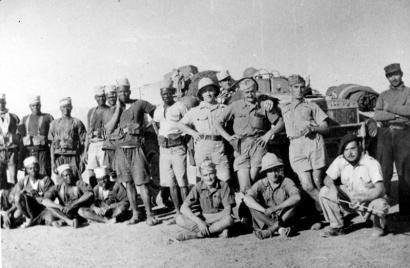
In late August 1940, while almost all of French Equatorial Africa (Chad, Congo, Oubangui-Shari) and Cameroon rallied to Free France, Régiment de tirailleurs sénégalais du Tchad (RTST) was the only regiment formed that fully joined the Free French Forces. A colonial unit mainly composed of Sara and Adjeira tirailleurs, reinforced by the arrival of volunteers, the regiment was soon able to take part in fighting. The huge show of support was essentially the work of its commander, Lieutenant-Colonel Marchand, Military Governor, and Félix Eboué, Governor of Chad.
Placed under the orders of Lieutenant-Colonel Leclerc, Military Commander of Chad, as of November 1940, RTST supplied experienced men, familiar with the layout of the terrain such as Commander Ingold and Lieutenant-Colonel Colonna d'Ornano, who led the first battle against the Italians in Mourzouk on January 11, 1941, during which he lost his life.
The regiment swiftly sourced equipment adapted to desert conditions. Contingents of the regiment who took part in the expedition to Kufra in February and March 1941 were distinguished along with the rest of the Leclerc Column. The unit was reorganized and re-equipped after the victory. Colonel Leclerc created two reconnaissance and combat companies that became the regiment’s spearheads in June and July 1941. Preparations for combat ensued until the end of the year: desert navigation, exercises, night hikes, etc.
An expedition to the south of Fezzan took place from February 2 to March 14, 1942 and was a success. A large haul was either taken or destroyed. While Rommel advanced through Egypt, various patrols were organized to the north and east of Tibesti. Living conditions were extreme; in addition to the heat, thousands of kilometers were traveled, all while being far away from any form of logistical base. The regiment took part in the conquest of Fezzan with over 3,000 men from December 1942 to February 1943. The attack was dazzling and far-reaching, causing impact as far away as Tripoli. It was a complete success. Reinforced with artillery, the unit took part in the Tunisian Campaign as part of L Force until May 1943, where it demonstrated its courage under fire, particularly in Ksar Ghilane.
With the Axis forces thrown out of Africa, the regiment became known as the Régiment de marche du Tchad (RMT) in July 1943, incorporated into 2e Division blindée who were undergoing training in Temara, Morocco under the command of General Leclerc. Tirailleurs from Chad were replaced in order to conform to US rules for armored divisions, in line with the model upon which 2e DB was constituted, as American command did not accept black people in units of that type.
RMT was reinforced with contingents from Corps-franc d'Afrique which proved itself in Tunisia and included young French escapees who arrived via Spain. The regiment consisted of three battalions and a headquarters company under the orders of Colonel Dio. It was transferred to England in April 1944 with the entire division, which was organized into various tactical groups soon after. 1er Bataillon du RMT was attached to Dio Tactical Group (GTD) under the orders of Commander Farret, 2e Bataillon was attached to Langlade Tactical Group (GTL) under the orders of Commander Massu, and 3e Bataillon was attached to Warabiot Tactical Group (GTV) under the orders of Commander Putz.
RMT landed on Utah Beach in Normandy with 2e DB on August 1, 1944. RMT was deployed to fight in Alençon, the forest of Ecouves, Ecouché and Carrouges from August 8. Alençon and Argentan were liberated, and on the evening of August 24, 9e compagnie of 3/RMT, led by Captain Dronne, arrived in Paris.
During the Vosges Campaign, the Massu group stood out particularly thanks to its actions in Dompaire from September 11-14. Under the orders of Commander Putz, 3/RMT received and fought off a very strong enemy counterattack in Anglemont on October 1-2, 1944 and took 400 prisoners in three days. It also managed to put 200 Germans out of action. Newly led by Commander Quilichini, 1/RMT also stood out in Vosges and Alsace, cleaning up wooded terrain between Meurthe and Vezouze, crossing through Sarrebourg amid deadly crossfire and being the first to cross through La Sarre in Sarraltroff, removing powerful defenses in Mittelbronn, a forward stronghold in defenses on the Saverne Pass.
During the Capture of Strasbourg on November 23, 1944, the French flag was raised on the cathedral of the liberated city by a Chad veteran. RMT units took part in clean-up operations in Alsace and Lorraine and reducing the Colmar pocket, which was liberated in February 1945. The regiment then went to Germany with 2e DB and pushed through to Hitler’s Eagle’s Nest in Berchtesgaden in the Bavarian Alps, where a section of 3/RMT had invaded The Berghof.
On June 12, 1945, Régiment de marche du Tchad was made a Companion of the Liberation. It had 70 Companions of the Liberation in its ranks, in addition to the 36 Companions who served in RTST. Today, Régiment de marche du Tchad is based in Meyenheim, Alsace and carries on the traditions of its glorious predecessors. As such, it is entitled to wear the fourragère in the colors of the Order of the Liberation.
- Companion of the Liberation - Decree of June 12, 1945
- Croix de Guerre 1939-1945 (4 citations)
- Presidential Unit Citation (USA)
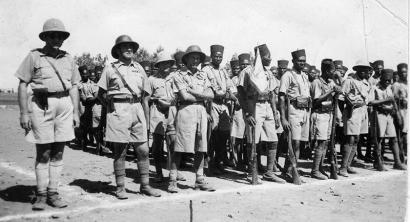
A historic unit in the French Army whose origins can be traced back to Richelieu, 2e Régiment d'infanterie coloniale (2e RIC) played an active part in the Battle of France of 1940. It was tasked with defending Amiens as of May 27 and heroically resisted until June 10. Recreated in September 1940 as part of the Armistice Army, it was eventually disbanded two months later.
On September 24, 1945, General de Gaulle pinned the Cross of Liberation to the regiment’s flag:
“A unit of volunteers who rallied to General de Gaulle in Palestine under the name of 2e Brigade, with march battalions who had already distinguished themselves in Eritrea, has taken part in every single Free France and liberation campaign since. In Syria, in El Alamein, Libya, in Takrouna, Tunisia, and in France in Toulon, Belfort, Colmar and in the Alps, this magnificent regiment continuously represented one of the most solid, courageous and ardent corps in the 1st Free French Division. Originally composed of tirailleurs from Sub-Saharan Africa trained by French volunteers, entirely replaced as a result of men lost in multiple battles, 2e Régiment d'Infanterie Coloniale ended the campaign with young volunteers who flocked from all over France, and only laid down their weapons once they had claimed their final victory; five years of uninterrupted fighting over three continents, with many heroic deeds acknowledged by over fifty Crosses of Liberation and three hundred citations by the Army.”
Under the name of 2e Régiment d'infanterie coloniale, the Cross of Liberation, the most prestigious decoration in Free France, rewarded five years of combat carried out by 2e Brigade française libre (2e BFL).
ORIGINS OF 2E BRIGADE FRANÇAISE LIBRE
The origins of 2nd Free French Brigade, 2e Brigade française libre (2e BFL), can be traced back to April 1941, when 1st Free French Light Division, 1ère Division légère française libre (1ère DFL), was established in Camp Qastina, Palestine under the orders of General Legentilhomme, made up of Lieutenant-Colonel Cazaud’s 13e Brigade mixte de Légion, and Lieutenant-Colonel Génin’s 1ère Brigade coloniale. Directly sourced from 2e BFL, 1ère Brigade coloniale was made up of the following march battalions (in addition to 1er Bataillon d'infanterie de marine): Bataillon de marche n°4 and Bataillon de marche n°3, the latter arriving in Eritrea where it stood out during fighting in Kub-Kub under the orders of Commander Garbay.
Headquartered in Damascus, 2e Brigade was required to wait until April 3, 1942 before an official decision was issued on its creation, linking it with General Koenig’s 1ère Brigade to form Free French of the Western Desert (FFWD) under the authority of General de Larminat. 2e BFL, who joined the British Eighth Army at the end of April in the Libyan desert, took up position in the Bardia region; at that time it included three infantry battalions: 1er Bataillon de Légion étrangère (1er BLE) and march battalions No. 3 and No. 11. It had a total of 3,159 men, approximately 2,000 less than Koenig’s brigade.
2e Brigade focused its efforts on sourcing equipment and finishing off its training, all while establishing, as of June 3, 1942, a center of resistance in the Gambut region (around 50 km to the east of Tobruk) where it was defending the airfield. During the forceful departure from Bir-Hakeim, it helped collect survivors from 1ère Brigade before withdrawing with the British Eighth Army.
EGYPT
The summer of 1942 was marked by the major overhaul of the FFWD. With a mere two battalions (BM 5 and BM 11) and still lacking equipment, 2e Brigade was tasked with holding defensive positions close to the Nile Delta for three months. On October 17, 1942, it finally moved closer to the front. It was stationed in the Alam El Alpha region on October 20, and on October 23 the Battle of El Alamein began. BM 5 and BM 11 held the west and south faces of the “Hogs Back” area respectively, situated 10 km north of Himeimat. On October 27, they headed to the “Great Circle” position, suffering some losses due to bombs and mines without ever really engaging in fighting. On November 3, Rommel made a break for it; a light column from 2e Brigade was launched in pursuit of the retreating enemy but was unable to catch it. Lacking equipment to enable them to take part in mobile warfare, both brigades became reserves in the Eighth Army as of November 15 for several weeks; they used this time to reorganize themselves.
TUNISIA
In early 1943, 2e Brigade, now commanded by General Brosset, included BM 4, BM 5 and BM 11. Its personnel grew further with the arrival of tirailleurs from Djibouti. After spending four months in Cyrenaica, 1ère DFL was sent toward Tunisia. It arrived there in early May 1943, in time to take part in the final leg of operations.
During the night of May 6-7, 2e BFL relieved the Scottish contingent of 51st Division of its duties in Takrouna; on May 10, its positions were heavily hit by enemy artillery, but the following day, BM 4 and BM 5 attacked contingents from Germany’s 90th Light Division who confronted them and conquered the Djebillat ridge after fierce fighting. On the evening of May 11, the brigade captured 265 Germans and 85 Italians. During the following evening, contingents from BM 11, led by Captain Magny, carried out a successful coup de main by clearing a point d’appui where gunfire had broken out at the rear of the conquered position. On May 14, the brigade accepted the surrender of General Orlando, leader of 21st Italian Corps. The Tunisian Campaign came to an end and 2e BFL were able to take part in the victory parade in Tunis, alongside 1ère Brigade, L Force (Leclerc) and Allied troops on May 20.
ITALY
In early June 1943, 1ère DFL received orders to leave Tunisia and take up position in Tripolitania. It returned to Tunisia two months later and spent the winter there, training and procuring American equipment before heading to Naples, Italy on April 20, 1944. 2e Brigade was deployed on May 16; on May 17 it crossed Rio Mari and broke through the “Dora line” (BM 11) and occupied Monte Calvo (BM 5); on May 18-19 it managed to cross the fiercely defended Rio Forma Quesa; on May 20 it skirted along the Liri to the west of Pontecorvo (BM 4) and Monte Morrone (BM 5), while BM 11 captured the Cappucini monastery and entered the southern districts of Pontecorvo. 100 of its men were killed and 360 were injured during five days of fighting. On June 5, while Allied forces converged in Rome and entered the Holy City, 2e Brigade was tasked with covering their right flank at Tivoli. Preceded by marines, BM 11 crossed the Tiber in Lunghezza and captured Bagni Albule. To its right, BM 5 faced strong resistance in Ponte Lucano and in Villa Adriana, which fell the next day.
Montefiascone fell under the joint efforts of BM 4 and BM 11 as the enemy was pursued toward Florence on June 9, 1944. On June 11, the advance resumed toward Viterbo. BM 4 entered Bolsena, but in doing so lost several of its men, including its leader, Commander Fougerat. A number of its men were injured. On June 12, BM 11 captured Monte Rado. 2e Brigade was relieved of its duties the next day; 170 of its men had been killed and 630 injured within one month. It was then assembled with 1ère DFL’s other contingents in southern Italy.
ARRIVAL IN PROVENCE
On August 13, 1944, the 15,807 Free French soldiers in 1ère DFL left the ports of Taranto and Brindisi for French soil, on which some had never set foot, and from which many had been separated for over four years. On August 16, 2e Brigade arrived in Cavalaire with General Brosset and his General staff at the head of the division. On August 20, the attack against Toulon was launched and it managed to break through the front lines of the German defense and capture Mount Redon, the village of La Crau, Maurettes and Hyères. On August 22-23, the brigade captured the hills of Thouar, above La Garde, the last stand before Toulon which fell on August 25. The very next day, it began pursuing the enemy toward Aix and the Rhône Valley; Colonel Gardet arrived to take command on August 25.
VOSGES
Pursuing the enemy from Toulon, the division finally caught up with it in late September 1944 in the foothills of the Vosges where it was able to organize itself. 2e BFL were positioned to the left of the division and its units were successively deployed to Lyoffans and Andornay on September 25-26 (BM 4), in Bois Saint-Georges on September 29 (BM 5) and in Lomont on September 28 (BM 11).
On November 14, BM 11 left 2e Brigade after fighting alongside it continuously over the past two and a half years. It was replaced by 22e Battalion de marche nord-africain (22e BMNA), placed under the orders of Commander Lequesne. The offensive on Belfort was launched on November 19. 2e Brigade attacked to the left of the division, on the Fresse-Auxelles-Haut route; it encountered little resistance. On November 21, BM 4 was firmly set up in Mont Saint-Jean, while BM 5 took hold of Puix-Gy; its contingents entered Giromagny the next day.
ALSACE
1ère DFL was exhausted; on December 9 it was relieved of its duties and made available to General de Larminat, who was tasked with bringing down German pockets in Grave and Royan. But no sooner had it arrived in the Atlantic, it was sent back to the east: Americans targeted by von Rundstedt’s German offensive in the Ardennes had requested the support of 2e DB, who needed relieving of their duties in the south of Strasbourg.
On January 2, 2e Brigade returned to the Alsace line between Ebersmunster to the north and Sélestat to the south, in freezing temperatures with failing equipment and without replacements for the men it had lost. The next day, Colonel Gardet resumed command. It was deployed to the Saint-Hippolyte - Ohnenheim route on January 23 and was required to seize crossings through Ill and Benwasser before occupying Ohnenheim to cover the left flank of the attack. It took almost ten days of fierce fighting in freezing temperatures to complete the mission, which resulted in the collapse of German resistance in the Colmar pocket. After two or three weeks of “guarding the Rhine”, 2e Brigade reorganized itself in the Ribeauville-Bergheim region.
AUTHION
Assigned to the Army of the Alps (Armée des Alpes) detachment with 1ère DFL in the Authion massif, 2e Brigade took charge of a secondary operation on both sides of Breil, close to the Roya, in April 1945. After an unsuccessful attempt on April 10, BM 4 managed to capture the Brouis Pass and entered Breil on April 15; it crossed the Roya and climbed the first slopes of Mont Ainé on April 16. 22e BMNA crossed Mount Mangiabo on April 10, captured the Agnon Pass on April 15, then passed to the right of BM 4 and carried out reconnaissance in Piene on April 16 before capturing it on April 21. 2e BFL continued to build on its achievements: BM 4 took up position on Mont Ainé on April 25, while 22e BMNA occupied Olivetta and San Michele in Italy. That same day, two detachments entered Ventimiglia, one from BM 5 who arrived from Menton, the other from 22e BMNA who came down from Olivetta, amid public applause. 2e Brigade’s victory march through Nice on May 8, 1945, attended by all its units, marked its final operation.
On May 15, 1945, 2e Brigade française libre became 2e Régiment d'infanterie coloniale and the three march battalions BM 4, BM 5, and 22e BMNA that it comprised became the regiment’s 1st, 2nd and 3rd battalions respectively. The 2e RIC flag was officially presented to the regiment on May 25, 1945 in Cannes, during a military parade. In 1940, the flag already featured the names of the eight battles won. Carrying on the traditions of the 2e Brigade française libre, the following were added to it: Kub-Kub 1941 - El Alamein 1942 - Takrouna 1943 - Pontecorvo 1944 - Toulon 1944 - Colmar 1945.
The regiment was awarded the Cross of Liberation, the Croix de Guerre 1939-1945 with 2 palms and the fourragère in the colors of the Military Medal with olive 1939-1945 in memory of the sacrifice made by its marine infantrymen, who died for France during the conflict. 2e Régiment d'infanterie de marine (2e RIMa), currently based in Le Mans, carries on the traditions of 2e Brigade française libre.
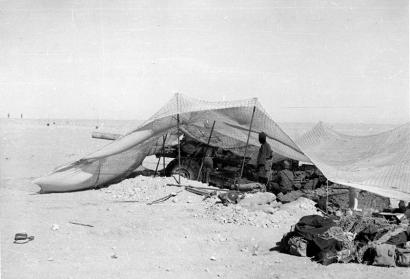
When the war broke out in 1939, the 1st Colonial Artillery Regiment, 1er Régiment d'artillerie coloniale (1er RAC), was stationed on the Maginot line. It was moved in May 1940, then after the general defeat it carried out an orderly retreat, stopping localized enemy offensives on several occasions and destroying several armored units. However, the regiment suffered heavy losses as a result of aerial bombing and constant fighting, before being annihilated in battle on June 20, when the last remaining artillerymen surrendered after firing their final shells.
Several weeks later, a draft artillery group was created with the first volunteers who rallied to General de Gaulle at Camp Aldershot, England, made up of a battery with four 75 mm guns, under the orders of Lieutenant Chavanac and a section with two 75 mm guns commanded by Lieutenant Quirot. The group, which formed the artillery for the Expeditionary Corps intended for the Dakar Operation, set sail on August 30, 1940.
The operation failed, and the artillerymen arrived in Cameroon where they joined forces with colonial artillerymen led by Captain Laurent-Champrosay, who joined the Free French Forces from Upper Volta.
The Quirot section and Laurent-Champrosay’s battery, along with the Orient Brigade, played an active part in the Eritrean Campaign against the Italians, particularly during the Capture of Keren on March 27, 1941, followed by Massaoua on April 8.
In May 1941, artillerymen gathered at Camp Qastina, Palestine where ground units belonging to the Free French Forces (FFL) were assembled. Consisting of two batteries, FFL artillery was deployed to Syria in June 1941. 1ère Batterie was better equipped and distinguished itself on the road to Damascus where the artillerymen were based after the operations.
1er Régiment d'Artillerie des Forces Françaises Libres (1er RAFFL) was officially formed in Damascus in December 1941 and placed under the orders of Squadron Leader Laurent-Champrosay. Now made up of four batteries with six 75 mm guns, transformed into a modern motorized unit, the regiment consisted of artillery from 1ère Brigade Française Libre commanded by General Koenig and incorporated into the British Eighth Army.
The most glorious pages of 1er RAFFL’s story were written on the burning sands of the Libyan desert. The regiment took part in the Capture of Halfaya in January 1942, before standing out in Bir-Hakeim in May and June 1942, where it was the only artillery present. Motorized batteries combining dynamism and combativeness harried Rommel’s columns before surrounding the position. Despite being bombed by Stukas, shot at by German counter-battery heavy artillery, and attacked by Afrika Korps and Italians, the regiment held firm until the area was evacuated during the night of June 10-11, 1942. However, many lives were lost: 1er RAFFL lost 64 men at Bir-Hakeim, including seven officers. Of its 24 guns, 8 remained.
After its retreat, the regiment was reorganized with English equipment and had four batteries with four 88 mm guns and a 140 mm battery. It fought again at Himeimat, to the south of the position at El Alamein on October 23-24, 1942.
Tasked with guarding Libyan airports for six months, 1er RAFFL yet again played a decisive role in the final battles in Tunisia, particularly in Takrouna in May 1943, where five of the regiment’s batteries fired over 25,000 gun shots.
After spending the summer in Tripolitania with 1ère DFL and 2e DFL (which became General Leclerc’s 2e DB), 1er RAFFL settled close to Tunis and merged with 2e RAC, essentially consisting of artillerymen from Djibouti and a battery from England. Still under the orders of Colonel Laurent-Champrosay, it was reorganized into three 105 mm groups commanded by squadron leaders Marsault, Jonas and Fuchs, and a 155 mm group under the orders of Squadron Leader Crespin.
The unit arrived in Italy in April 1944 with 1ère DFL under the command of General Brosset. It assisted infantry assaults with such precise aim, particularly in Garigliano, and remained so stoic under enemy fire that it earned the admiration of General Clark, commander of the Fifth American Army. From May 20 to June 19, the regiment continued to fight in Pontecorvo, Tivoli, Montefiascone, Bolsena, Aquapendente, and Radicofani where Colonel Laurent-Champrosay was killed when his vehicle hit a mine during a reconnaissance mission. Not only did 1er RAFFL lose its leader in Italy, it also lost five battery commanders.
On August 16, 1944, the regiment arrived in Cavalaire, France, under the command of Colonel Bert. It took part in the Capture of Toulon with brilliance, before scaling the valleys of the Rhône and Saône in pursuit of the enemy.
The regiment regained contact with German troops in Villersexel, Haute-Saône in September and assisted in the capture of Andornay, Lyoffans, Clairgoutte and Ronchamp.
1er RAFFL went on the offensive in Belfort in difficult conditions in November, before its African soldiers were repatriated to Africa due to the cold climate. They were replaced by volunteers from mainland France.
Sent to reduce the size of the Atlantic pockets under the command of General de Larminat, the regiment was urgently called back to the east due to the German offensive in the Ardennes led by von Rundstedt in December 1944. It formed part of the units responsible for blocking the German counterattack in Obenheim, Strasbourg and for reducing the size of the Colmar pocket.
Reaching the Rhine on February 3, 1945, the regiment was moved and took part in the final battles in the Authion massif in the Alps with 1ère DFL in the spring of 1945.
From March 22, 1945, 1er RAFFL became known as 1er Régiment d'Artillerie coloniale (1er RAC). 1er RAC was presented with the Cross of Liberation (Decree of August 7, 1945) by General de Gaulle on September 24, 1945 in Chelles, Seine-et-Marne. 34 artillerymen and officers from 1er RAC also received the exceptional distinction.
1er Régiment d'Artillerie de Marine (1er RAMa) was disbanded in July 2015. 11e RMAa carry on its traditions.
- Knight of the Legion of Honor
- Companion of the Liberation - Decree of August 7, 1945
- Croix de Guerre 1939-1945 with three palms
- Croix de Guerre 1914-1918
- Cross for Military Valor
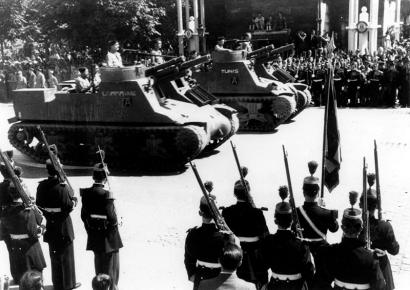
ORIGINS
1st Group of the 3rd Colonial Artillery Regiment, 1er Groupe du 3e Régiment d'artillerie coloniale (1/3 RAC), directly inherited the artillery contingency that had supported General Leclerc’s African operations before the creation of 2e Armored Division, 2e Division blindée, in the summer of 1943.
After members of French Equatorial Africa (Chad, Congo and Oubangui-Shari) rallied to Free France in late August 1940 followed by Cameroon and Gabon in November 1940, Colonel Leclerc was appointed Military Commander of Chad and of Régiment de tirailleurs sénégalais du Tchad (RTST). He swiftly focused his attention toward the north, namely the Libyan desert.
During the capture of Kufra, an Italian oasis in the Libyan desert, on March 1, 1941, a single 75 mm gun led by Lieutenant Ceccaldi and manned by Albert Grand, was able to support the Column formed solely from artillery. It was intelligently used to fire effective blows in quick succession and regularly changed direction which led the besieged enemy to believe that the Free French troops were much more heavily armed. Thanks to this ruse, the “artillery” in Leclerc’s Column largely contributed to victory in Kufra.
During this time, and up until late 1942, several artillery sections in Chad were preparing to join Leclerc’s troops. Equipped mainly with 75 mm guns, its sections were under the tactical and administrative control of RTST. RTST gradually attached its sections to Leclerc’s Column where they were commanded separately to support reconnaissance and combat companies implemented by Leclerc, who increased raids in the Libyan desert and Fezzan.
Six artillery sections were deployed from December 1942 to February 1943 during the campaigns of Fezzan and Tripolitania. Squadron Leader Crépin took command as of the Tunisian Campaign. His high technical value and efficiency stood out during the attack on El Araneb, in which he put four 77 mm enemy pieces out of action.
At the end of the Fezzan Campaign, L Force (previously the Leclerc Column) received two 75 mm batteries trained in Chad which took part in the Tunisian Campaign from February to May 1943, along with all of L Force.
1ER GROUPE DU 3E RÉGIMENT D'ARTILLERIE COLONIALE
In June 1943, General Leclerc deemed it important to re-establish the traditional links with former units of the French Army. As such, he named the artillery in his division “3e Régiment d'artillerie coloniale” (3e RAC), successor of 3e Régiment d'artillerie de marine (3e RAMa), created under the Consulate in 1803 and which went on to stand out in the colonial campaigns of the 19th century followed by the First World War. Placed under the orders of Lieutenant-Colonel Crépin, 3e RAC was composed of three groups, each containing two batteries.
In September 1943, the regiment made its way to Temara, Morocco, where 2e Division blindée was formed, equipped, and trained for many months. On November 10, 1943, 3e RAC was condensed into a single group: “1er Groupe du 3e RAC” (1/3 RAC). Placed under the orders of Squadron Leader Fieschi, who replaced Lieutenant-Colonel Crépin after he was appointed commander of the 2e DB artillery division, the group included a General staff and three batteries of self-propelled artillery, led by captains Dubois, Demarle and Magnat respectively, and a supply column under the orders of Captain Waynbaum.
1/3 RAC formed the artillery of Dio Tactical Group (GTD) within 2e DB.
In April 1944, all of 2e DB sailed to England to take part in operations on the Western Front. After a period of training at Camp Sledmere, Hull, 1/3 RAC landed in Normandy on August 1, 1944. The baptism of fire took place on August 8 with two aerial bombings which claimed several lives within the group. It went on to play an active role in the Liberation of Alençon on August 12. The next day, 3e Batterie took the lead in Carrouges, where it fired 259 shots. 1/3 RAC then distinguished itself in front of Argentan, destroying many enemy vehicles.
On August 24, the group supported Warabiot Tactical Group (GTV) and GTD, firing several thousand shots on the approach to Paris, before entering the city the following day. On August 26, captains Demarle, Genet and Dubois from 1/3 RAC led General de Gaulle’s honorary detachments to Notre-Dame.
On August 28-29, the group fought at Le Bouget before leaving Paris and heading east several days later with 2e DB. Then came the Battle of Lorraine, a “war of position” that lasted until the Liberation of Baccarat on November 1, 1944.
1/3 RAC then supported GTD as it hurried to Strasbourg, where 1ère Batterie arrived with the leading contingent on November 23, 1944 after destroying a great deal of equipment and taking many prisoners. The group held its own amid bitter weather conditions in the harsh countryside of Alsace, along the Rhine, particularly distinguishing itself in Erstein, Osthouse, Gerstheim and Obenheim. The group’s artillerymen successfully supported the Americans’ southern flank with General Leclerc’s entire division during the German counter-offensive led by von Rundstedt in the Ardennes in late December.
In January 1945, the group reached Alsace. After the Liberation of Colmar on February 7, it headed to Châteauroux along with 2e DB for some well-deserved rest. 1/3 RAC went to the Atlantic Front where it fired a record number of shells in front of Royan from April 15-18, 1945.
1/3 RAC crossed the German border on April 28, 1945 and ended the war in Berchtesgaden, before being stationed close to Landsberg, not far from Munich, following the German surrender on May 8, 1945.
On June 18, 1945, it took part in the Victory Day Parade in Paris along the Champs-Élysées.
1er Groupe du 3e Régiment d'artillerie coloniale received the Cross of Liberation by Decree of August 7, 1945.
As a result of 3e RAC’s actions within the Free French ranks, the names of the eight battles it took part in were added to its flag, which already featured “Fezzan 1942” - “Tunisian South 1943” - “Paris 1944” - “Strasbourg 1944”. It holds the Croix de Guerre 1939-1945 with two citations from the French Army. It had five Companions of the Liberation in its ranks.
Today, 3e Régiment d'artillerie de marine (3e RAMa) is based at Canjuers close to Draguignan and carries on the traditions of 1/3 RAC. As such, it is entitled to wear the fourragère in the colors of the Order of the Liberation.
- Companion of the Liberation - Decree of August 7, 1945
- Croix de Guerre 1939-1945 with 2 palms
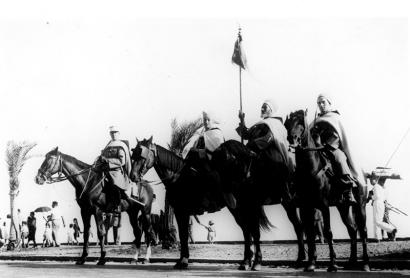
On June 30, 1940, Squadron Leader Paul Jourdier who led the 1st squadron of the 1st Moroccan Spahis regiment, 1er Escadron du 1er Régiment de spahis marocains (1er RSM), stationed in Lebanon, had already decided to ignore the armistice between France and Germany before hearing General de Gaulle’s appeal.
He crossed the border between Lebanon and Palestine with his unit on horseback and joined the English in Palestine. The Jourdier Squadron had a final count of around forty men (with around twenty deciding to go back to Lebanon) and was stationed in Ismailia, Egypt, for the summer.
In late October 1940, it was sent to Sudan by the British after receiving new volunteers as reinforcements, where it arrived after a journey of several thousand kilometers. The squadron was assigned to 5th Indian Division and moved to Eritrea where it fought against the Italians, particularly in Umbrega on January 2, 1941, where it led one of the last cavalry charges in the history of the French Army.
In March 1941, Jourdier Squadron became a squadron group: 1er Groupe d'escadrons de spahis, and on May 20, it met up with the majority of ground units belonging to the Free French Forces (FFL) assembled in Qastina, Palestine, to prepare for the Syrian Campaign. During the campaign, Spahis from 1er Escadron fought tough battles against their counterparts from 1er RSM, who had remained faithful to Vichy, on June 15 in Najah.
Following the Armistice of Saint Jean d’Acre signed on July 14, 1941 which put an end to hostilities in the Levant, the Spahis became permanently motorized and formed an Army Corps Reconnaissance Group (GRCA), which remained under the orders of Squadron Leader Jourdier. Intelligence and providing cover became their main tasks. The GRCA was assigned to General Cazaud’s brigade in April 1942 and reorganized in Libya the following month. As a result, it received defense missions in Bardia and Sollum.
In August 1942, the Spahis had two companies with five platoons containing three armored cars and a company containing four platoons with three self-propelled guns. At that same time, while Jean Rémy took over from Paul Jourdier, the Spahis became a flying column with tank company 1ère Compagnie de chars, and were attached to the British Army’s 7th Armoured Division (“Desert Rats”). The Flying Column carried out long-range raids in the Libyan desert. It took part in the Battle of El Alamein on October 23, 1942, supporting the 13e Demi-brigade de Légion étrangère (13e DBLE) to the south of the disposition in Himeimat. The Flying Column went on to help pursue the fleeing enemy, taking many prisoners, up until November 8, 1942.
“Western Desert” a mechanized cavalry regiment that became known as 1er Régiment de marche de spahis marocains (1er RMSM), was constituted under the Free French Forces following a decision made by General Catroux on September 24, 1942.
After resting in the El Alamein region, the Spahis arrived in Tunisia in February 1943; they distinguished themselves in fighting amid the heights of Matmatas. The Flying Column was swiftly incorporated into General Leclerc's L Force on its arrival from Chad and they went on to fight in the Tunisian Campaign together. On May 20, 1943, a detachment from 1er RMSM marched through the liberated city of Tunis.
At the end of the Tunisian Campaign and up until late August 1943, the Spahis were sent to Tripolitania “in penance” along with all FFL troops, pending the conclusion of agreements between de Gaulle and Giraud. Still under the orders of Lieutenant-Colonel Rémy, 1er RMSM became a reconnaissance regiment within General Leclerc’s 2e Division blindée in Morocco, in October 1943. It was reorganized and re-equipped with American equipment, as was the division. It was composed of a light tank company with three platoons consisting of five tanks, and four armored car companies with three platoons consisting of five armored cars. It also comprised over 1,100 men. Due to this, 1er Escadron became known as 5e Escadron to comply with American rules, which stated that tank companies in reconnaissance regiments belonging to armored divisions should always be named 1er Escadron, or in English, “Company A”.
Repatriated to England in April 1944, 2e DB continued its training there before landing in Normandy on August 1, 1944. From then on, squadrons within 1er RMSM, who continued to form the advance guard, were distributed into various Tactical Groups within 2e DB (GTL, GTV, GTD and GTR). They took part in fighting in the Normandy countryside, and all squadrons took part in clean-up operations following the capital’s liberation.
In early September 1944, the Spahis provided cover on the Marne; on September 11, the GTR contingent crossed through Colombey-les-Deux-Églises, while that same day, 5e escadron met up with advanced contingents from the 1ère Division française libre who had arrived in Provence three weeks earlier. Supplied with new equipment, the Spahis swiftly began fighting in the vicinity of Baccarat. Assigned to various groups, the squadrons carried out both protection and reconnaissance missions: A symbol of unity, the calot rouges (red caps), were then deployed in Lorraine and in Basse Alsace. On November 23, 1944, a Spahi from the regiment’s 5e escadron belonging to Dio Tactical Group raised the French flag on Strasbourg Cathedral, fulfilling the Oath of Kufra.
The assembled regiment headed off to support fighting to reduce the Atlantic pockets. As it was in reserve, it did not take part in fighting. It then crossed the Rhine and marched victoriously in Germany where the Spahis took part in the Capture of Berchtesgaden in May 1945. 1er Régiment de marche de spahis marocains returned to France in late May and received the Cross of Liberation on August 23, 1945 in Fontainebleau.
Jourdier Squadron and 1er RMSM had 33 Companions of the Liberation in their ranks. Today, 1er Régiment de Spahis carries on the traditions of 1er Régiment de marche de spahis marocains and is stationed in Valence. As such, it is entitled to wear the fourragère in the colors of the Order of the Liberation.
- Companion of the Liberation - Decree of August 7, 1945
- Croix de Guerre 1939-1945 (2 palms)
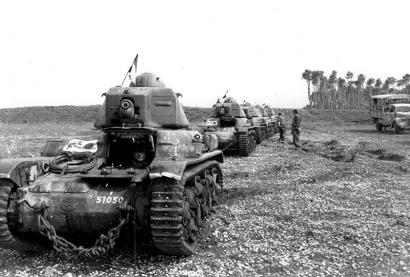
1ÈRE COMPAGNIE AUTONOME DE CHARS DE COMBAT
When General de Gaulle launched his appeal on June 18, 1940, he possessed a mere twelve H39 tanks brought over from Narvik, Norway. As an armored warfare theorist, he simply could not leave things as they were. Thanks to the arrival of Frenchmen who had refused the armistice, the Free French Forces were swiftly able to create a combat tank regiment, 1ère Compagnie autonome de chars de combat des Forces françaises libres (FFL), as of July 1940 under the command of Lieutenant Volvey.
1ère Compagnie set sail for Dakar, Senegal on August 31. After failing to rally French West Africa to the Free French cause, the company headed to Cameroon. It arrived in Douala and helped rally Gabon through the equatorial rainforest, despite encountering great difficulties due to the state of the ground there. The unit then arrived in Suez on April 23, 1941 and headed to Qastina, Palestine, where FFL ground units had assembled with a view to supporting the Syrian Campaign. Following difficult operations against Vichy forces in Syria in June 1941 where practically all its tanks were destroyed, 1ère Compagnie was replenished with personnel and R35 tanks taken from Vichy troops.
It moved to Beirut in early 1942 after a period of rest. Meanwhile in England, a 2nd company was established thanks to the arrival of young volunteers from all over the world. Kitted out with American equipment, it headed to Africa and arrived at Pointe-Noire on October 2, 1941; it was stationed in Chad and assigned to the Niger front. In turn, 1ère Compagnie was sent to Egypt in April 1942 and equipped with English Crusader tanks where it swiftly formed part of FFL‘s Flying Column, 1ère Colonne volante, who had joined the Eighth British Army in the Western Desert regiment, alongside Spahis from Jourdier Squadron. It took part in the Great Battle of El Alamein from October 23 to November 4, 1942. The tanks managed to prevent the German counterattack and went on to pursue the enemy.
After a short period of rest, the Flying Column crossed Cyrenaica and Tripolitania before entering Tunisia in February 1943. From March 6-7, 1ère Compagnie took part in fierce fighting in Medenine alongside the Eighth British Army. It was then attached to General Leclerc’s L Force on its arrival from Chad, and both went on to operate out of the Tunisian South up to Kairouan and Jebel Zaghouan. After securing victory in Tunisia, it returned to Tripolitania.
501E RCC
A 3rd tank company was created as of December 1941 in Camberley, England, by Lieutenant Branet; in May 1943 it arrived in Cairo where it met up with 2e Compagnie who had left Chad three months earlier. The two companies arrived in Sabratha, Tripolitania together where they joined 1ère Compagnie. Once assembled, on July 1, 1943 they formed a tank combat regiment, 501e Régiment de chars de combat (501e RCC), named after the oldest tank regiment in France. Commander Cantarel took command of the regiment.
The regiment received support from many volunteers deployed in Morocco and Algeria, as well as from French escapees. On August 28, after heading toward Morocco, the regiment was provided with American equipment in the form of M4 Sherman tanks; it became part of the newly formed armored division, 2e Division blindée, commanded by General Leclerc. 501e RCC was organized in line with the American model and a 4th company was established with supervision from other units and young volunteers. It was equipped with M3 light tanks.
The regiment sailed for England in the spring of 1944. After intensive training, it landed on Utah Beach in Normandy on August 2-3, 1944. It was sent to battle as part of V Tactical Group (GTV), to which it belonged. It took part in the battles of Alençon and Ecouché and in the encirclement of the Falaise pocket. On August 23, 501e RCC charged towards Paris. Lieutenant Michard’s section of 2e Compagnie was the first to enter the capital on the evening of August 24 along with Captain Dronne’s detachment.
The following day, the division entered the city which was liberated that afternoon. After a brief period of rest, 501e RCC returned east. Andelot was taken on September 12. Vittel was occupied on September 13 and a bridgehead was established in Châtel on September 15. Anglemont was taken on October 2. New offensives were launched in the direction of the town of Baccarat on October 30. The unit successfully fulfilled its mission by isolating the town from German forces coming from the north.
After heavy fighting, the Vosges line was penetrated once and for all. 501e RCC crossed through Vosges via the Dabo Pass which led to the Plain of Alsace. On November 23, 1944, 2e DB liberated Strasbourg, upholding the Oath of Kufra. On March 1, 1941 after taking the Italian base of Kufra in the Libyan desert, Colonel Leclerc had made his men swear the Oath of Kufra: “Swear not to lay down arms until our colors, our beautiful colors, fly over Strasbourg Cathedral.”
The eastward advance continued: the regiment arrived in Erstein on November 30 and took the village of Herbsheim on December 2; the capture of Rossfeld and Benfeld followed. On December 31, the regiment was relieved of its duties by 1ère Division française libre (1ère DFL) and traveled northward due to the German counterattack led by von Rundstedt.
Heavy fighting took place in Sélestat and Grussenheim in January 1945; battles in which 501 RCC paid a heavy price. 2e Compagnie lost two of its section chiefs during the fighting. On January 29, the Germans attempted a desperate counterattack to take back the village; they were pushed back and decimated.
It received orders to depart for Germany in the second half of April 1945 after several months of rest near Châteauroux, where 501e RCC was reconstituted. Lieutenant-Colonel Delpierre replaced Lieutenant-Colonel Cantarel. The Rhine was crossed on April 28. 501e RCC ended its glorious march at Hitler’s Eagle’s Nest in Berchtesgaden, where Captain Compagnon’s 3e Compagnie secured the surrender of the town’s SS barracks. There were 25 Companions of the Liberation in the ranks of FFL’s first three tank companies and 501e RCC.
- Companion of the Liberation - Decree of August 7, 1945
- Croix de Guerre 1914-1918 (2 palms)
- Croix de Guerre 1939-1945 (2 palms)



